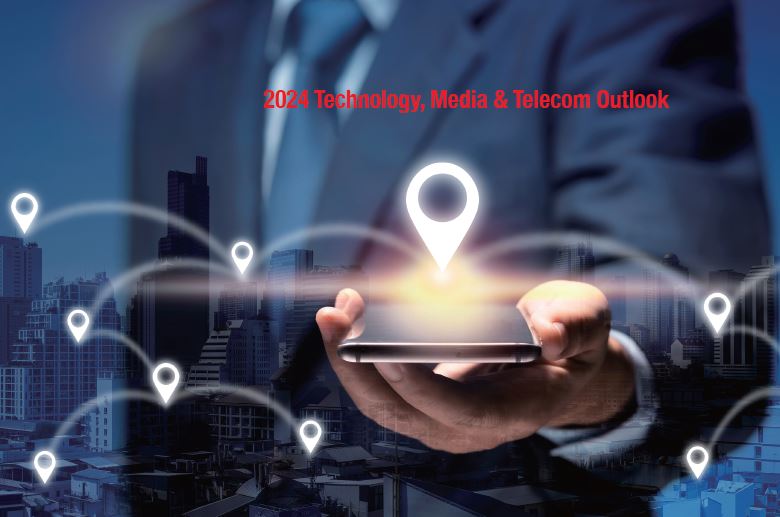As the era of direct-to-device (D2D) satellite communications begins in earnest, new growth opportunities are being created in the satellite, semiconductor, and communications industries. What would happen if communication became possible anywhere on the planet using only mobile devices such as smartphones or Internet of Things (IoT) devices without any special equipment? Deloitte predicts that sales of satellite-connected smartphones will exceed 200 million units in 2024, and that these smartphones will be equipped with special semiconductor chips worth a total of about $2 billion (about 2.756 trillion won). Additionally, as investment in satellite production and launch increases, the D2D market size is expected to exceed $3 billion (approximately KRW 4.135 trillion) in 2024.
D2D is a technology that provides limited connectivity in areas without access to wireless networks, and does not compete with wireless network services that provide high-speed, low-latency connectivity. Rather, wireless network operators can earn additional profits by providing text or voice services in areas where wireless networks do not reach through collaboration or contracts with satellite operators.

D2D commercialization, likelihood of success
Satellite-based global communications services are already being actively developed. Emergency disaster/relief communication, simple text messaging, IoT monitoring, etc. have already been realized, and thanks to recent emergency disaster/relief communication, precious lives have been saved in the event of a car accident or natural disaster.
In addition, for D2D commercialization, capital investment, satellite launch, semiconductor development, establishment of regulatory framework, and consultation with wireless network operators are actively taking place. Satellite communication is a new revenue-generating opportunity for all players in the ecosystem. First, smartphone manufacturers who are concerned about recent poor sales performance are expecting that satellite communication will serve as an attractive feature that will encourage consumers to replace their smartphones with the latest models. Second, wireless network operators seeking new revenue sources by increasing the number of subscribers and providing additional services can expand their geographic service coverage without spending enormous amounts of money to build new land infrastructure. Third, it is also a new opportunity for satellite operators seeking ways to significantly expand their customers and investments by expanding their presence in the global communications market.
Consumers driving the growth of the D2D market can be divided into two types. According to estimates by the Global Mobile Communications Association (GSMA), approximately 400 million people, or 5% of the world's population, cannot use wireless networks, so they can benefit from satellite-based wireless services. However, a much more important consumer group is the 5.6 billion wireless subscribers worldwide. Combining satellite and terrestrial wireless networks can eliminate service gaps and maximize users along with the geographic reach of services. Even if only a small number of existing wireless communication subscribers use satellite communication additional services, the D2D market can grow rapidly.
In addition to the consumer market, corporate and government services are also important market factors. D2D technology especially shines in communication services for public safety and national security. D2D is also ideal for IoT applications (apps) where only intermittent communication and limited data transmission is possible. In particular, it has great potential for use in healthcare, industry, and transportation sectors.
D2D industry leader
Apple & Global Star Apple invested $450 million (approximately KRW 620 billion) in Global Star, securing 85% of Global Star's low earth orbit (LEO) constellation satellite capabilities. Currently, 740 million iPhone 14 and 15 users in 14 countries can use the ‘Satellite-based Emergency SOS’ function to request emergency rescue in the event of an emergency outdoors where Wi-Fi or wireless service access is not available, and ‘Roadside Assistance’ You can receive AAA's emergency vehicle service in remote areas.
Space We plan to expand.
Link Global American venture company Link Global is building its own constellation of satellites to provide D2D services. Link Global emphasizes that its satellite system can communicate with all smartphones without requiring a special semiconductor chip.
MediaTek & Bullet Android or iOS devices equipped with a geostationary orbit (GEO) satellite-compatible semiconductor chipset developed by Taiwan's MediaTek can be connected to Bullet's 'Satellite Connect' platform. Because this service utilizes GEO-based satellites such as Inmarsat and Ecostar, sending and receiving messages takes longer than low-orbit satellite-based services, but it has the advantage of being available regardless of the location of the smartphone.
Huawei & China Telecom Huawei's flagship smartphone, the Mate 50 series, is equipped with a function that can send emergency rescue texts based on China's Beidou satellite navigation system. The latest model, Mate 60 Pro, has calling and messaging capabilities based on the Tiyantong-1 GEO satellite. China plans to expand D2D services by adding one to two LEO constellation satellites within the next few years.
The value of D2D technology has already been proven... Speed of market formation is key
Although the D2D market is in its early stages, it is growing dynamically with many companies around the world actively entering the market. However, just because the technology has been developed and the enthusiasm is high, it does not necessarily mean that it will be successful. The D2D market faces the following challenges.
Economic Challenges D2D services are pouring in, but will demand grow commensurately? Are consumers willing to pay for the service? So how do you set up a rate plan to maximize profits? Will the capital needed to launch, operate, and manage constellation satellites continue to be raised? Will demand for D2D semiconductors and devices also increase rapidly?
Technical Challenges Large-scale constellation satellites themselves present a number of technical challenges in launching and operating in already crowded orbital environments. Moreover, D2D services based on this must overcome another technical obstacle. First of all, coordinating frequency use and managing the possibility of conflict between operators is a problem that cannot be easily solved. Global standards are also needed for issues such as cybersecurity and interoperability. We must also consider the question of what the mainstream technological method will be.
Challenges in establishing regulations Currently, there is almost no regulation for the D2D market. Therefore, satellite and wireless network operators must take the lead in establishing regulations on issues such as frequency allocation, orbital deployment, and satellite service licensing, working with appropriate regulatory authorities in each country.
Combining different markets to create an air-like communications environment is certainly a big challenge, but it is also an opportunity to create valuable value. A great deal of value can be created, including providing communications services to those without access, improving citizen safety and emergency response, expanding IoT apps, and strengthening the resilience and reliability of global communications infrastructure. The value of D2D has already been proven like this. Now, the point to watch is how quickly new innovations and consumption patterns emerge that can fully realize the combination of satellite and terrestrial networks and form a market on a large scale.
Smartphone armed with biometric authentication app re-proves status as ‘top consumer device’
 |
| Duncan Stewart Research Director, Deloitte Canada, Advanced Technology, Media, and Telecommunications, International Financial Analyst, CFA Instititue, USA |
The trend of smartphones replacing and surpassing today's tens of billions of physical authentication and payment methods, including card keys, passwords, driver's licenses, passports, credit cards, and cash, is expected to begin in earnest starting in 2024. This is why the measure of smartphone success cannot be quantified simply by sales volume. There are also expectations that smartphones will once again prove their status as the ‘top consumer device.’
Smartphone sales in 2024 will be 1.26 billion units, which will be somewhat lower than the all-time high of 1.57 billion units, but it is expected to be a more successful year than usual. With 5 billion users around the world forming an ecosystem, its value is becoming more prominent as it is highlighted as a reliable authentication method.
The authentication function of smartphones is being used in increasingly diverse ways. As biometric authentication apps rapidly increase in 2024, the number of smartphone authentication cases is expected to reach tens of trillions per year in the medium term, and authentication functions are expected to grow explosively in the long term.
No comments:
Post a Comment